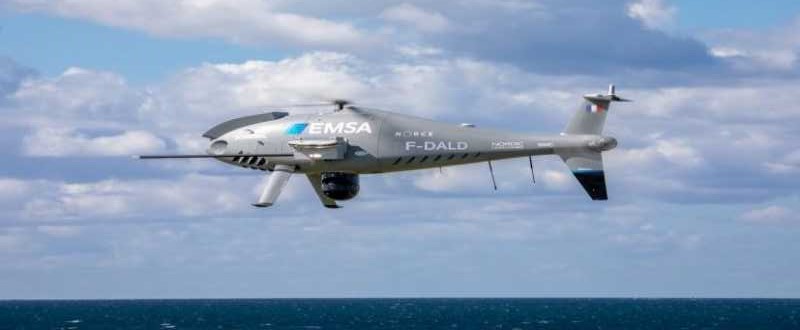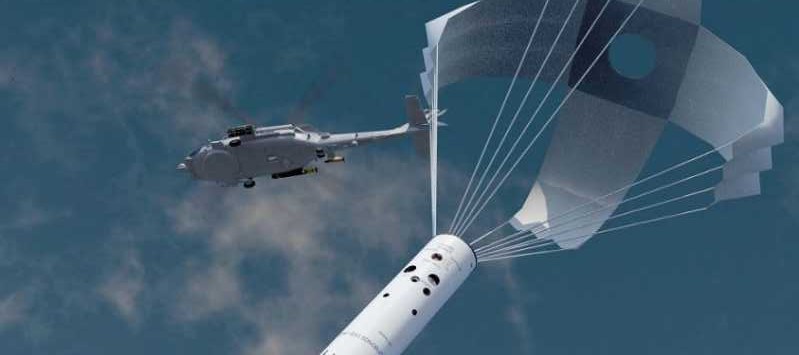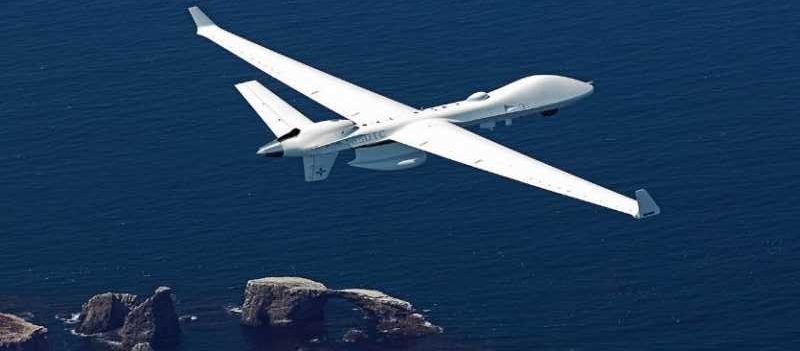 Navantia is a worldwide reference for design and construction of high technology miliary and civilian vessels. They offer global solutions in design, ToT, construction, development and integration of systems, repair and life cycle support, working closely with partners in strategic markets. Abel Mendez, International Commercial Director, Navantia, speaks about their operations, collaborations and services in the maritime sector. Excerpts from the interview:
Navantia is a worldwide reference for design and construction of high technology miliary and civilian vessels. They offer global solutions in design, ToT, construction, development and integration of systems, repair and life cycle support, working closely with partners in strategic markets. Abel Mendez, International Commercial Director, Navantia, speaks about their operations, collaborations and services in the maritime sector. Excerpts from the interview:
Navantia has almost 100 years of experience designing, building and maintaining submarines for the Spanish Navy, and exporting submarines in the last decade through the Scorpene consortium with DCNS. Navantia has exported submarines to Chile, Malaysia and India, being in charge of the functional and detail engineering of the aft body
 Abel Mendez
Abel Mendez
International Commercial Director
Abel Méndez. PhD Naval Architect graduated with merits by A Coruña University (Spain). Abel joined Navantia in 1997, where he took several positions in different areas of the Company; Oil & Gas, merchant ships, offshore wind and naval vessels, working from two Navantia shipyards in Spain, Fene and Ferrol, and lately from the Madrid headquarters. During that period, Abel developed different roles in the engineering, construction and commercial departments. Relevant achievements include the formation and direction of the Offshore Wind area in Navantia, and the role of design manager of LHD ships constructed by Navantia for the Royal Australian Navy. For the last two years, Abel has held the position of Defence & Security Director, where he continues to participate in the achievement of the company’s contracts in the defence area in the international sector.
The Systems division of Navantia has extensive experience in the design, development, production and integration of various systems in the maritime sector. Could you share more details about the operations?
The Systems division of Navantia has extensive experience in the design, development, production and integration of: Combat Systems, Fire Control Systems, Integrated Communications Systems, Integrated Navigation and Bridge Systems and Integrated Platform Management Systems for any type of ship: patrol vessels, frigates, submarines, aircraft carriers, amphibious vessels, minehunters, survey vessels and support ships. Additionally, Navantia has a long tradition in manufacturing and refurbishing artillery going back to the 18th century.
Navantia also provides solutions for the Army including: Battlefield Management Systems, Fire Control Systems, Forward Observer Systems, and surveillance systems providing security for both military and civilian strategic infrastructures, such as: military bases, coastlines, ports, harbours, and offshore platforms
Navantia’s openness to activities that contribute to the creation of new industries, develop capacities, and the progressive acquisition of industrial skills is well known, and has taken different forms depending on the Client requirements and local capacity. A good example of Navantia’s flexibility are the ToT and localization programs developed for three very different scenarios within the last 12 months; Saudi Arabia, United Kingdom and Australia. In Saudi Arabia, Navantia created a Joint Venture with SAMI (Saudi Military Industries) to develop, integrate and commercialize the first Saudi Combat System, known as HAZEM, a derivative of Navantia’s CATIZ combat system. The newly created Company, called SAMINavantia, received from Navantia in September 2019 a relevant contract for the supply and integration of the combat system of five corvettes for the Royal Saudi Naval Force.
 The Navantia Technology Center groups and coordinates the areas of R&D and digital technologies, channeling them towards the Shipyard 4.0. Could you shed more light onto it?
The Navantia Technology Center groups and coordinates the areas of R&D and digital technologies, channeling them towards the Shipyard 4.0. Could you shed more light onto it?
4.0 technologies are applied to four areas branded as ‘Smart’ by Navantia: Smart Shipyard, Smart Ships, Smart Sustainment and Smart Naval Base. Such services are developed based on 14 enabling technologies: artificial intelligence, robotics, autonomous vehicles, drones, 3D manufacturing, new materials, bid data analytics, Internet of Things, Blockchain, modeling and simulation, cloud storage, Robotic Process Automation (RPA), augmented reality and 5G
Under the category of Smart Shipyard, Navantia implements robotic welding, use of drones and autonomous vehicles, robotic process automation and the use of virtual reality tools in workshops.
Smart Ship services include Digital Twins and Integrated Services Systems (ISS), leveraging information from Integrated Platform Management Systems (IPMS).
The Smart Naval Base services include Through Life Support Facilities (TLSF) and Land Based Test Sites (LBTS), consisting in supporting testing of software and hardware of any platform system connected to Navantia’s IPMS for upkeep, upgrades and updates, the Navantia training system and the EOLO through life support tools.
Smart Sustainment includes a Data Center, a shore-based laboratory for smart sustainment, Navantia Playback center, and data repository designed to provide playback capability to the IPMS and Predictive Maintenance. ARGOS 21 is an automated tasks & analysis system to optimize the maintenance analysis tools and machine learning. Additionally, Predictive Maintenance software is used based on thermography, vibration and lube oil analysis.
The Spanish frigate F110 project incorporates many of the above smart functionalities, and will be the first to implement a Digital Twin of the vessels, which will provide a real ship “avatar”, that allows to visualize the ship’s state and condition from a shore base, even thousands of miles away, using digital communication resources. Also, this project is developed under a new platform Siemens NX, ensuring processes end-to-end, and data integrity.
All the above solutions and the lessons learnt by Navantia in the implementation of digital technologies are offered to the Strategic Partner and to the Indian Navy for consideration and gradual adoption through the P75(I) project.
 The company has been associating with India for a long time especially in submarine sector. What are Navantia’s operations in India?
The company has been associating with India for a long time especially in submarine sector. What are Navantia’s operations in India?
India is a strategic market for Navantia and has a delegation in Delhi. Navantia has participated in several naval programs in India. Among them the Scorpene Submarines, partnering with Naval Group and still under construction by Mazagon Docks Limited Mumbai. At present Navantia is associated with Larsen & Toubro for the future LPD Program
We are at the moment working quite intensively in the preparation of the Navantia design or Indian submarine P75(I), as we have been selected as one of the potential strategic partners.
During 2020, Navantia has made a great push on indigenization activities. Having a ready-made design for a very similar unit to P75(I) is a great advantage, as all equipment’s and materials are defined to the last detail, permitting very immediate consultation with the local Indian industry.
At present, we continue to work very close to Indian suppliers regarding indigenization opportunities for P75(I). In the last 10 months we have submitted more than 1,000 RFIs to Indian suppliers, covering approximately 98% per cent of the cost items for the submarine
We remain very enthusiastic about this opportunity, and truly believe that the S-80P is an outstanding product which makes the selection of Navantia as designer for P75(I) a sensible low-risk choice
 Navantia has been immersed, for more than 90 years, in a process of evolution and improvement of the design, production and life cycle of submarines. How strong is the submarine arm of Navantia? Who are the major customers?
Navantia has been immersed, for more than 90 years, in a process of evolution and improvement of the design, production and life cycle of submarines. How strong is the submarine arm of Navantia? Who are the major customers?
Navantia has almost 100 years of experience designing, building and maintaining submarines for the Spanish Navy, being as well very successful in exporting submarines in the last decade through the Scorpene consortium with DCNS. Under this alliance, Navantia exported submarines to Chile, Malaysia and India, being in charge of the functional and detail engineering of the aft body. Four aft submarine bodies were built in Navantia Cartagena in Spain, with two submarines (one for Chilean Navy and another one for Malaysian Navy) integrated and delivered by Navantia. The scope of work for the India project was the same, with the construction of the six units taking place in in India. The cooperation with India still continues, though in 2008 Navantia suspended the agreement with DCNS for Scorpene to concentrate into a new submarine concept designed to meet the requirements of the future Spanish Navy submarines. This was the beginning of the S-80P project, the first design developed 100 per cent inhouse by Navantia in a few decades, which is now in the final construction stage, and ready for the export market.
The S-80P is a 3,000-tonne submarine, almost double size than Scorpene, incorporating several innovative features, including a last-generation Air Independent Propulsion (AIP) system and powerful attack capabilities including heavy weight torpedoes, mines and submarine launched anti-ship and cruise missiles, etc. This is quite an exceptional performance, in fact, the capacity to launch submarine cruise missiles (SLCM) is unique for nonnuclear NATO submarines.
 How did the company brace for the impact caused by the Covid-19 pandemic? What are the goals set to be achieved in the post-pandemic days?
How did the company brace for the impact caused by the Covid-19 pandemic? What are the goals set to be achieved in the post-pandemic days?
Covid-19 pandemic has impacted Navantia activities as it has everyone’s else. In Spain we have gone through a confinement period after the virus break up in March 2020.
Nowadays Navantia has mitigated the impact through the implementation of different precautionary sanitary measures to ensure the safety of all our workers, especially in production, and recovery plans have been agreed and implemented with our customers .It’s been quite a remarkable achievement that we have managed to maintain the fabrication process of the Saudi Avante 2200 corvettes to guarantee the same launching rate of one unit every four months.
Luckily the impact in technical areas has been considerably lower thanks to the advantages of the digitalization process which Navantia started a few years back, applying new technologies not only to our products and services but also to our internal processes with high productivity.






